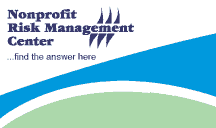|
October 14, 2009
The Power of Salt
By Carlye Christianson
I thoroughly enjoy cooking and entertaining. Recently, I have had salt on my mind. Perhaps it is because of a speech I heard that reminded me of growing up and learning to cook. My sister and I prepared meals for the family once a week. One night we made pancakes. In order to ensure that everyone enjoyed hot pancakes, we did not sit down together but rather one person ate at a time. My brother was the first to enjoy the pancakes. Though my sister and I did not see him when he took his first bite, apparently his face had the tell-tale look of agony. My mother immediately instructed him not to say anything that would hurt our feelings.
Mother was next. In the passing of a nanosecond she knew the problem and the source of it. My sister and I had put a cup of salt into the pancake batter as opposed to a teaspoon. I have often wondered if we permanently harmed my brother.
Perhaps because of that experience or perhaps because of literature and commentary on the ill health affects of excessive salt I simply don’t use it when I cook. But I do occasionally wonder what I am missing. Salt has so many powers. There is the curative power as seen in the use of saline solution as an intravenous infusion and the cleansing power as seen through rinsing contact lenses in saline solution; the preservative aspects and, as long as you have not had a cup of salt in your pancakes, the flavor enhancing feature.
The various ways that salt impacts our lives gets me to thinking of the ways sound policies can impact nonprofit organizations. We sometimes overlook ways they fortify our missions. And in overlooking the role of policies we lose a great opportunity to improve our services and find better ways to focus on our missions and those conditions that prevent us from realizing our potential. For example, we very often speak of orientations, effective communication, regular staff meetings and the like. But what we don’t often mention is the information we can garner from the departing employee. Even more often, we don’t consider the powerful information held in the psyche of the departing volunteer. We are often so busy, we forget that communicating with people when they are walking out the door may yield invaluable information we can use to strengthen our organizations.
The exit interview is in many ways the best time if not the only time you can learn about the employee’s or the volunteer’s unvarnished assessment of their experience. The impact of obtaining the information can be like salt. It can be curative. Through a brief encounter even if it is in writing (though face to face is recommended) you can gain insight into how or what your organization is doing to realize its potential. Indeed you may also learn why it is not the organization you want it to be. But where is the time to sit down and prepare those questions or come up with a list of issues that could or should be raised during an exit interview? What are the risks to your organization of being caught by surprise in not taking the time to identify and ask those questions?
The solution may be available through My Risk Management Policies, one of the new online tools that has been developed by the Nonprofit Risk Management Center. This tool can be found at www.MyRiskManagementPolicies.org. This resource allows you to create clear, concise, and customized policies for your nonprofit organization.
In the policy options for the Exit Interview Questionnaire, you can find 39 possible questions from which you can chose to create the format that is right for your organization. In a matter of minutes this single policy and its contents can give you a powerful approach to learn what aspects of your organization are keeping you from reaching your goals.
The one-time cost of the new tool includes varied approaches to implementing more than forty policies is $179. Each week the Center is posting new templates and policy language to the site. As a subscriber you’ll enjoy access to the new content as it is posted at no additional cost.
So, what about those thoughts, comments and opinions from those volunteers who serve as board members? These are the people who are responsible for the governance and ultimate oversight of your nonprofit. How often are they asked to consider the effectiveness of the information to do their job and what more would be of value? How often are they asked in a non-confrontational environment as to what they know about the organization or whether they feel the approach to oversight is adequate?
My Risk Management Policies offers two separate instruments you can develop to gather this critical information. One is a Board Self Assessment and the other is a Board Survey. Through the Self Assessment, you can select from up to 23 separate categories of inquiry in which board members can rate themselves and the board. Through the Board Survey you can select from 35 questions to create a tool for learning the opinions of board members about the effectiveness of governance and management.
My Risk Management Policies was developed to help leaders avoid the mistake of using ill-suited policies found online or borrowed from other organizations. Creating practical policies that are unique to your nonprofit is an important component of risk management. Leaders who “borrow” the policies of another nonprofit may actually increase their exposure to loss, instead of effectively managing risk, by adopting policies that are beyond the reach of their nonprofit. Through this tool you will be in the best possible position to create and recommend policies truly suited for your nonprofit.
We hope you consider the value of this approach to essential policy development for your organization. The Center is committed to continuing to add new content on a regular basis. The one-time subscription cost of $179 will allow you access the product for many years to come.
So what does this have to do with salt? Perhaps the risk management policies of your nonprofit are in some ways like salt. They can be curative in helping you identify and correct weaknesses, and they can be preservative in giving you a solid foundation on which to deliver vital services today and in the future.
Carlye Christianson is Senior Counsel and Director of Special Projects at the Nonprofit Risk Management Center.
|


